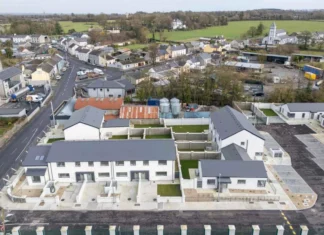Ireland’s newest research vessel the RV Tom Crean has arrived in the country, and is currently docked at the Port of Galway.
The Marine Institute’s newest vessel will set off on its first survey towards the end of July. and then make its way to Dingle in advance of its official commissioning due to take place in Autumn.
After its commission, the ship will be based back in Galway, for the use of the Marine Institute, which is located in Oranmore.
The RV Tom Crean is named for the renowned seaman and explorer from Kerry who undertook three ground-breaking expeditions to the Antarctic in the early years of the 20th Century.
The research vessel will carry out a wide range of research, including expanded fisheries surveys, seabed mapping and marine spatial planning, climate change related research, environmental monitoring, it deep water surveys.
Outside of Irish waters, it will also be used to support increased marine research out in the Atlantic Ocean.
Paul Connolly, CEO of the Marine Institute said that this has been an extremely successful project, arriving on time, and on budget.
“We are delighted that Galway, is the vessels first stop in Irish waters ahead of its official launch and commissioning due to take place in Dingle, Kerry in Autumn.”
Along with the Marine Institute, the ship will also be used by other state agencies and universities to support their research.
“After the official commissioning, the RV Tom Crean will be based in Galway, and it will greatly enhance our capacity to undertake collaborative research and acquire the data and knowledge essential to sustainably manage our ocean resources.”
The ship was commissioned in 2019 to replace the now 26 year old RV Celtic Voyager, which which was Ireland’s first purpose-built research vessel in 1997.
The RV Tom Crean will be at sea for 300 operational days each year – heading to sea for at least 21 days at a time – and aims to accommodate up to 3000 scientist days annually and is designed to operate in harsh sea conditions.
It will also maintain and deploy weather buoys, observational infrastructure and the Institute’s Remotely Operated Vehicle (ROV Holland I)
The vessel design incorporates the latest proven technologies to ensure that it operates as efficiently as possible, with reduced fuel consumption and minimising the vessel’s environmental impact and carbon footprint.
The ship was built at the Spanish shipyard Astilleros Armon Vigo S.A. after being designed by Norwegian company Skipsteknisk AS.













